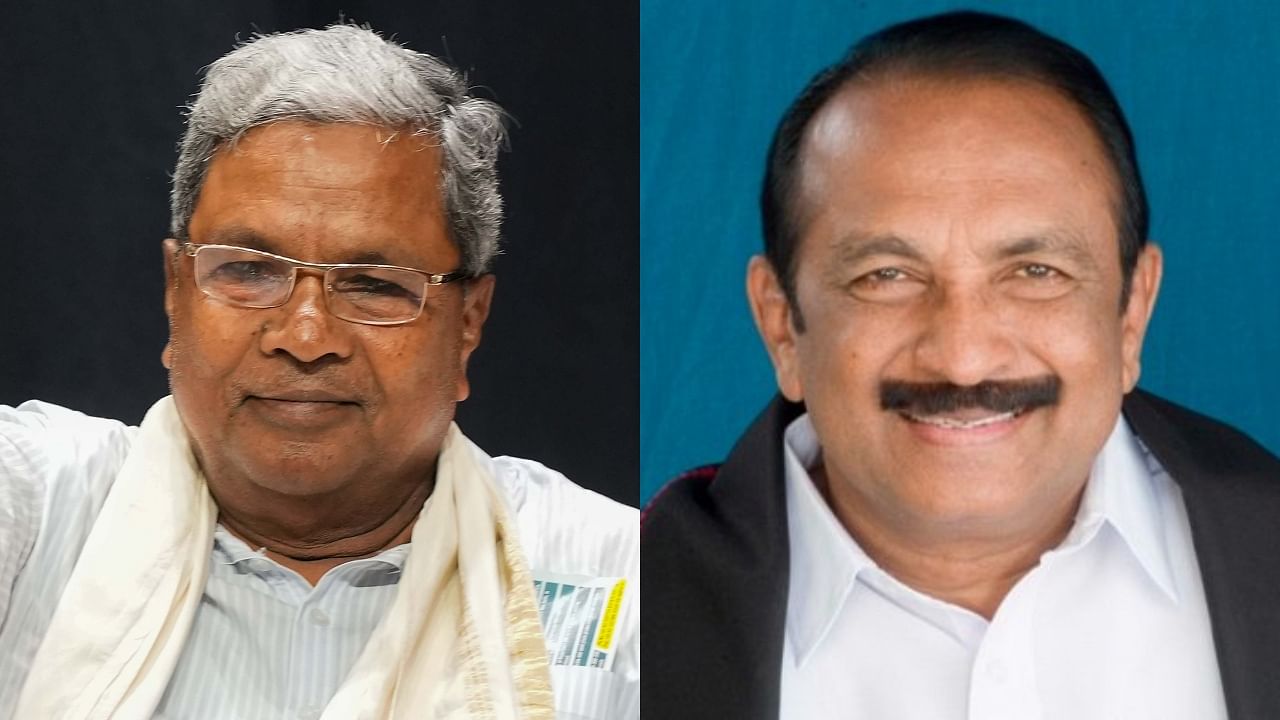
Karnataka Chief Minister-designate Siddaramaiah and MDMK leader Vaiko have something in common. Both quit their respective political parties in protest against the ‘son rise’ – DMK’s M K Stalin for Vaiko and H D Kumaraswamy of the JD (S) for Siddaramaiah. But their political career after the much-touted rebellion is a study in contrast.
While Siddaramaiah is set to occupy the Chief Minister’s chair for the second time, Vaiko is merely running the MDMK after having lost all his political stocks. Not just that, Vaiko ended up proposing Stalin, whose rise in the DMK he opposed fiercely in the 1990s, as the Chief Minister after seeking refuge in the parent political party that sent him to Rajya Sabha for three consecutive terms.
But, Siddaramaiah’s astute political sense and manoeuvring skills prompted him to dissolve his own outfit, All India Progressive Janata Dal, which he launched after quitting the JD(S) headed by former Prime Minister H D Deve Gowda and merge it with the Congress. He quit the party after it became increasingly clear that Gowda might hand over the reins of JD(S) to his son rather than him. Siddaramaiah joining Congress helped him become what he has achieved today.
Also Read | CMs of Cong-ruled states, Oppn leaders to attend Siddaramaiah's swearing-in ceremony on May 20
Siddaramaiah’s patience despite not receiving complete support from the colleagues in Congress paid off when he took over as the Leader of Opposition from Mallikarjun Kharge in 2009 and from then there was no looking back. Congress absorbed Siddaramaiah completely and has now been forced to overlook one of its loyal leaders, D K Shivakumar, for the Chief Minister’s post.
Contrast this with that of Vaiko’s political career after he was sacked from the DMK in 1993. His rebellion, touted to be the second biggest in DMK after the one by M G Ramachandran in 1972, fell flat within years as the party never won seats on its own, without an alliance. Even in the first elections, 1996, that the MDMK contested, the party failed to open its account.
Vaiko, after swinging like a pendulum between the DMK and AIADMK, had to finally come and join the DMK alliance in 2017. Two years later, he became a Rajya Sabha MP, courtesy Stalin and his party, MDMK, was allotted just one seat, that too on the DMK’s symbol, Rising Sun.
After having opposed dynastic politics for the whole of his career, Vaiko finally came “under pressure” to appoint his son, Durai Vaiko, to a key post in the party. And now, Vaiko is under pressure from his own colleagues to merge the party with the DMK.
Siddaramaiah also came close to working with Kumaraswamy, the man he opposed, when the Congress proposed his name for Chief Ministership following its defeat in the 2018 elections. However, Siddaramaiah never accepted Kumaraswamy’s leadership, unlike Vaiko approving Stalin.